-
51 results in Exploration of CardiologySort byLatest
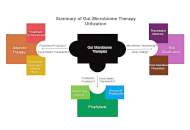 Age-related atrial fibrillation: is there a role for the gut microbiome?Open AccessReviewAge-related atrial fibrillation (AF) is a common condition that has yet to be fully understood, with mechanisms to explain its development under investigation. Notably, cellular senescence, cardiac [...] Read more.Michael Li ... Robert M. LustPublished: March 24, 2025 Explor Cardiol. 2025;3:101251
Age-related atrial fibrillation: is there a role for the gut microbiome?Open AccessReviewAge-related atrial fibrillation (AF) is a common condition that has yet to be fully understood, with mechanisms to explain its development under investigation. Notably, cellular senescence, cardiac [...] Read more.Michael Li ... Robert M. LustPublished: March 24, 2025 Explor Cardiol. 2025;3:101251
DOI: https://doi.org/10.37349/ec.2025.101251
This article belongs to the special issue Molecular Mechanisms of Cardiovascular Aging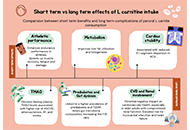 Comparison of short-term and long-term effects of peroral L-carnitine intake: clinical implications of elevated TMAO levels in cardiovascular complicationsOpen AccessReviewL-Carnitine (LC) is integral to energy production and fatty acid metabolism, facilitating the transport of long-chain fatty acids into mitochondria for β-oxidation. It modulates metabolic pathway [...] Read more.Harsahaj Singh Wilkhoo ... Adnan Akhtar ShaikhPublished: February 10, 2025 Explor Cardiol. 2025;3:101250
Comparison of short-term and long-term effects of peroral L-carnitine intake: clinical implications of elevated TMAO levels in cardiovascular complicationsOpen AccessReviewL-Carnitine (LC) is integral to energy production and fatty acid metabolism, facilitating the transport of long-chain fatty acids into mitochondria for β-oxidation. It modulates metabolic pathway [...] Read more.Harsahaj Singh Wilkhoo ... Adnan Akhtar ShaikhPublished: February 10, 2025 Explor Cardiol. 2025;3:101250
DOI: https://doi.org/10.37349/ec.2025.101250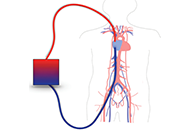 Extubation of patients with COVID-19 acute respiratory failure during extracorporeal membrane oxygenation support is associated with improved survivalOpen AccessOriginal ArticleAim: Severe acute respiratory syndrome coronavirus 2 (SARS-CoV-2), or COVID-19, infection resulting in acute respiratory distress syndrome (ARDS) requiring veno-venous or veno-arterial extracorpo [...] Read more.Sean Kelleher ... Amit PrasadPublished: February 05, 2025 Explor Cardiol. 2025;3:101249
Extubation of patients with COVID-19 acute respiratory failure during extracorporeal membrane oxygenation support is associated with improved survivalOpen AccessOriginal ArticleAim: Severe acute respiratory syndrome coronavirus 2 (SARS-CoV-2), or COVID-19, infection resulting in acute respiratory distress syndrome (ARDS) requiring veno-venous or veno-arterial extracorpo [...] Read more.Sean Kelleher ... Amit PrasadPublished: February 05, 2025 Explor Cardiol. 2025;3:101249
DOI: https://doi.org/10.37349/ec.2025.101249 Who is a reviewer? The Good, the Bad, and the Ugly phenotypesOpen AccessEditorialBy offering their expertise, reviewers help authors improve their work and also support editors in selecting high-quality studies, thereby reinforcing the integrity of scientific literature. Much li [...] Read more.Eugenio PicanoPublished: January 23, 2025 Explor Cardiol. 2025;3:101248
Who is a reviewer? The Good, the Bad, and the Ugly phenotypesOpen AccessEditorialBy offering their expertise, reviewers help authors improve their work and also support editors in selecting high-quality studies, thereby reinforcing the integrity of scientific literature. Much li [...] Read more.Eugenio PicanoPublished: January 23, 2025 Explor Cardiol. 2025;3:101248
DOI: https://doi.org/10.37349/ec.2025.101248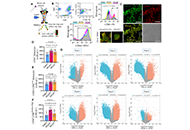 Association between a specific monocyte subset and heart failure with preserved ejection fraction in patients with uremiaOpen AccessOriginal ArticleAim: This study aimed to establish a model based on gene expression in peripheral blood mononuclear cells (PBMCs) for predicting the incidence of heart failure with preserved ejection fraction (H [...] Read more.Xinrui Wang ... Yang YangPublished: January 20, 2025 Explor Cardiol. 2025;3:101247
Association between a specific monocyte subset and heart failure with preserved ejection fraction in patients with uremiaOpen AccessOriginal ArticleAim: This study aimed to establish a model based on gene expression in peripheral blood mononuclear cells (PBMCs) for predicting the incidence of heart failure with preserved ejection fraction (H [...] Read more.Xinrui Wang ... Yang YangPublished: January 20, 2025 Explor Cardiol. 2025;3:101247
DOI: https://doi.org/10.37349/ec.2025.101247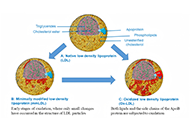 Oxidized low-density lipoproteins and their contribution to atherosclerosisOpen AccessReviewThe oxidation of lipoproteins has a key role in the development of atherosclerosis, a condition where plaque builds up in artery walls. Research shows that when low-density lipoprotein (LDL) oxidize [...] Read more.Abdullatif Taha BabakrPublished: January 17, 2025 Explor Cardiol. 2025;3:101246
Oxidized low-density lipoproteins and their contribution to atherosclerosisOpen AccessReviewThe oxidation of lipoproteins has a key role in the development of atherosclerosis, a condition where plaque builds up in artery walls. Research shows that when low-density lipoprotein (LDL) oxidize [...] Read more.Abdullatif Taha BabakrPublished: January 17, 2025 Explor Cardiol. 2025;3:101246
DOI: https://doi.org/10.37349/ec.2025.101246
This article belongs to the special issue Molecular Mechanisms of Cardiovascular Aging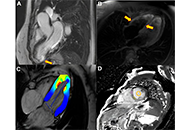 Takotsubo syndrome in the context of atherosclerotic acute myocardial infarction: the role of magnetic resonance imaging in determining cause or consequenceOpen AccessCase ReportWe present the case of a woman admitted for an acute ST-segment elevation myocardial infarction. Emergency catheterization was conducted, revealing diffuse lesions affecting 70% of the anterior desc [...] Read more.Cristhian Espinoza Romero ... Tatiana Torres LealPublished: January 14, 2025 Explor Cardiol. 2025;3:101245
Takotsubo syndrome in the context of atherosclerotic acute myocardial infarction: the role of magnetic resonance imaging in determining cause or consequenceOpen AccessCase ReportWe present the case of a woman admitted for an acute ST-segment elevation myocardial infarction. Emergency catheterization was conducted, revealing diffuse lesions affecting 70% of the anterior desc [...] Read more.Cristhian Espinoza Romero ... Tatiana Torres LealPublished: January 14, 2025 Explor Cardiol. 2025;3:101245
DOI: https://doi.org/10.37349/ec.2025.101245
This article belongs to the special issue Multimodality Imaging in Ischemic Heart Disease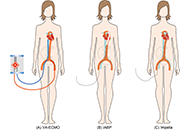 Implications of mechanical circulatory support devices in a pregnant woman with cardiogenic shockOpen AccessCase ReportData on the use of mechanical circulatory support devices in pregnant women are limited. A 27-year-old woman at 27 weeks and 6 days of gestation was supported by three different mechanical circulato [...] Read more.Johanna A. van der Zande ... Jerome M. J. CornettePublished: January 13, 2025 Explor Cardiol. 2025;3:101244
Implications of mechanical circulatory support devices in a pregnant woman with cardiogenic shockOpen AccessCase ReportData on the use of mechanical circulatory support devices in pregnant women are limited. A 27-year-old woman at 27 weeks and 6 days of gestation was supported by three different mechanical circulato [...] Read more.Johanna A. van der Zande ... Jerome M. J. CornettePublished: January 13, 2025 Explor Cardiol. 2025;3:101244
DOI: https://doi.org/10.37349/ec.2025.101244
This article belongs to the special issue Cardiovascular Risk for Mothers and Offspring Resulting from Complicated Pregnancy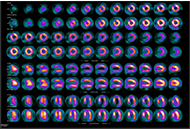 Diagnostic modalities for ischemic heart disease: evaluating the role of stress echocardiography, cardiac CT, and myocardial perfusion scintigraphy in guiding coronary angiographyOpen AccessReviewCardiovascular diseases, particularly ischemic heart disease (IHD), are the leading cause of mortality globally, accounting for 16% of deaths. Effective management of ischemic cardiomyopathy (ICM) i [...] Read more.Marco Fabio Costantino ... Luisiana StolfiPublished: January 13, 2025 Explor Cardiol. 2025;3:101243
Diagnostic modalities for ischemic heart disease: evaluating the role of stress echocardiography, cardiac CT, and myocardial perfusion scintigraphy in guiding coronary angiographyOpen AccessReviewCardiovascular diseases, particularly ischemic heart disease (IHD), are the leading cause of mortality globally, accounting for 16% of deaths. Effective management of ischemic cardiomyopathy (ICM) i [...] Read more.Marco Fabio Costantino ... Luisiana StolfiPublished: January 13, 2025 Explor Cardiol. 2025;3:101243
DOI: https://doi.org/10.37349/ec.2025.101243
This article belongs to the special issue Multimodality Imaging in Ischemic Heart Disease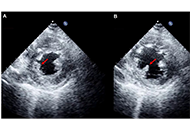 Echocardiographic Management of papillary muscle rupture during acute myocardial infarctionOpen AccessReviewPapillary muscle rupture is a rare but fatal complication of acute myocardial infarction. The incidence of this complication has been reduced to less than 0.1% of patients due to the advent of prima [...] Read more.Paolo G. Pino ... Federico NardiPublished: January 10, 2025 Explor Cardiol. 2025;3:101242
Echocardiographic Management of papillary muscle rupture during acute myocardial infarctionOpen AccessReviewPapillary muscle rupture is a rare but fatal complication of acute myocardial infarction. The incidence of this complication has been reduced to less than 0.1% of patients due to the advent of prima [...] Read more.Paolo G. Pino ... Federico NardiPublished: January 10, 2025 Explor Cardiol. 2025;3:101242
DOI: https://doi.org/10.37349/ec.2025.101242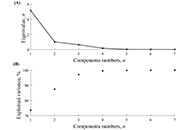 Heart rate variability in soccer players and the application of unsupervised machine learningOpen AccessOriginal ArticleAim: This study aimed to investigate the relationship between heart rate variability (HRV) parameters and performance in soccer players. Methods: This study used a cross-sectional design to [...] Read more.Wollner Materko ... Carlos Alberto Machado de Oliveira FigueiraPublished: January 10, 2025 Explor Cardiol. 2025;3:101241
Heart rate variability in soccer players and the application of unsupervised machine learningOpen AccessOriginal ArticleAim: This study aimed to investigate the relationship between heart rate variability (HRV) parameters and performance in soccer players. Methods: This study used a cross-sectional design to [...] Read more.Wollner Materko ... Carlos Alberto Machado de Oliveira FigueiraPublished: January 10, 2025 Explor Cardiol. 2025;3:101241
DOI: https://doi.org/10.37349/ec.2025.101241
This article belongs to the special issue Exploring Exercise Cardiology: from Molecules to Humans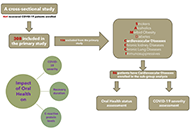 Impact of oral health on COVID-19 outcomes in patients with pre-existing cardiovascular conditions: a questionnaire-based analysis of disease severity, recovery time, and C-reactive proteinOpen AccessOriginal ArticleAim: This study aimed to assess oral health’s influence on COVID-19 outcomes in recovered individuals with pre-existing cardiovascular conditions. Methods: In the main study employing a c [...] Read more.Ahmed Basuoni, Amany Hany Mohamed KamelPublished: November 25, 2024 Explor Cardiol. 2024;2:280–290
Impact of oral health on COVID-19 outcomes in patients with pre-existing cardiovascular conditions: a questionnaire-based analysis of disease severity, recovery time, and C-reactive proteinOpen AccessOriginal ArticleAim: This study aimed to assess oral health’s influence on COVID-19 outcomes in recovered individuals with pre-existing cardiovascular conditions. Methods: In the main study employing a c [...] Read more.Ahmed Basuoni, Amany Hany Mohamed KamelPublished: November 25, 2024 Explor Cardiol. 2024;2:280–290
DOI: https://doi.org/10.37349/ec.2024.00040
This article belongs to the special issue Environmental Cardiology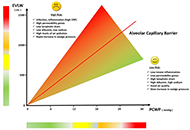 B-lines by lung ultrasound in cardiologyOpen AccessReviewPulmonary congestion is a key determinant of heart failure, but for a long time it has been an elusive target for the clinical cardiologist in the pre-B-line era, despite research efforts of Carlo G [...] Read more.Marco Antonio Rodrigues Torres, Natália Moraes de QuevedoPublished: November 14, 2024 Explor Cardiol. 2024;2:265–279
B-lines by lung ultrasound in cardiologyOpen AccessReviewPulmonary congestion is a key determinant of heart failure, but for a long time it has been an elusive target for the clinical cardiologist in the pre-B-line era, despite research efforts of Carlo G [...] Read more.Marco Antonio Rodrigues Torres, Natália Moraes de QuevedoPublished: November 14, 2024 Explor Cardiol. 2024;2:265–279
DOI: https://doi.org/10.37349/ec.2024.00039
This article belongs to the special issue Multimodality Imaging in Ischemic Heart Disease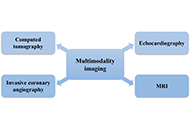 Emerging technologies and applications in multimodality imaging for ischemic heart disease: current state and future of artificial intelligenceOpen AccessReviewIschemic heart disease (IHD) is a major global health issue, frequently resulting in myocardial infarction and ischemic cardiomyopathy. Prompt and precise diagnosis is essential to avert complicatio [...] Read more.Praveen Kumar Chandra Sekar, Ramakrishnan VeerabathiranPublished: November 11, 2024 Explor Cardiol. 2024;2:253–264
Emerging technologies and applications in multimodality imaging for ischemic heart disease: current state and future of artificial intelligenceOpen AccessReviewIschemic heart disease (IHD) is a major global health issue, frequently resulting in myocardial infarction and ischemic cardiomyopathy. Prompt and precise diagnosis is essential to avert complicatio [...] Read more.Praveen Kumar Chandra Sekar, Ramakrishnan VeerabathiranPublished: November 11, 2024 Explor Cardiol. 2024;2:253–264
DOI: https://doi.org/10.37349/ec.2024.00038
This article belongs to the special issue Multimodality Imaging in Ischemic Heart Disease Epigenetic mechanisms linking pregnancy complications to cardiovascular disease in offspringOpen AccessReviewPregnancy complications such as pre-eclampsia, gestational diabetes, and intrauterine growth restriction (IUGR) not only present immediate risks to maternal and fetal health but also have long-term [...] Read more.Kazim Raza Talpur ... Muhammad Waleed AbdullahPublished: November 07, 2024 Explor Cardiol. 2024;2:241–252
Epigenetic mechanisms linking pregnancy complications to cardiovascular disease in offspringOpen AccessReviewPregnancy complications such as pre-eclampsia, gestational diabetes, and intrauterine growth restriction (IUGR) not only present immediate risks to maternal and fetal health but also have long-term [...] Read more.Kazim Raza Talpur ... Muhammad Waleed AbdullahPublished: November 07, 2024 Explor Cardiol. 2024;2:241–252
DOI: https://doi.org/10.37349/ec.2024.00037
This article belongs to the special issue Cardiovascular Risk for Mothers and Offspring Resulting from Complicated Pregnancy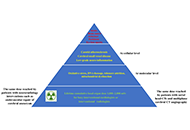 The head of invasive cardiologists as a target of professional exposure to ionizing radiationOpen AccessReviewExposure to ionizing radiation has recognized detrimental cancer and non-cancer health effects. These effects are now well-proven not only for high doses > 1,000 millisieverts (mSv) associate [...] Read more.Andrea BorghiniPublished: November 05, 2024 Explor Cardiol. 2024;2:224–240
The head of invasive cardiologists as a target of professional exposure to ionizing radiationOpen AccessReviewExposure to ionizing radiation has recognized detrimental cancer and non-cancer health effects. These effects are now well-proven not only for high doses > 1,000 millisieverts (mSv) associate [...] Read more.Andrea BorghiniPublished: November 05, 2024 Explor Cardiol. 2024;2:224–240
DOI: https://doi.org/10.37349/ec.2024.00036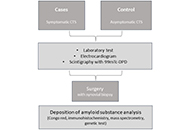 Systemic transthyretin amyloidosis: carpal tunnel syndrome in a Portuguese population (CarPoS)Open AccessProtocolCarpal tunnel syndrome (CTS) is the most common type of entrapment neuropathy and affects approximately 1% to 5% of the general population, mostly patients older than 50 years. CTS is present in var [...] Read more.Sofia Pimenta ... Elisabete MartinsPublished: October 24, 2024 Explor Cardiol. 2024;2:217–223
Systemic transthyretin amyloidosis: carpal tunnel syndrome in a Portuguese population (CarPoS)Open AccessProtocolCarpal tunnel syndrome (CTS) is the most common type of entrapment neuropathy and affects approximately 1% to 5% of the general population, mostly patients older than 50 years. CTS is present in var [...] Read more.Sofia Pimenta ... Elisabete MartinsPublished: October 24, 2024 Explor Cardiol. 2024;2:217–223
DOI: https://doi.org/10.37349/ec.2024.00035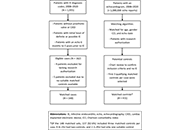 Echocardiographic findings and subsequent risk of native valve endocarditisOpen AccessOriginal ArticleAim: The association of echocardiographic findings and subsequent risk of left-sided native valve endocarditis (LS-NVE) is undefined. The aim of this study was to determine if transthoracic echoc [...] Read more.Juan A. Quintero-Martinez ... Larry M. BaddourPublished: September 24, 2024 Explor Cardiol. 2024;2:204–216
Echocardiographic findings and subsequent risk of native valve endocarditisOpen AccessOriginal ArticleAim: The association of echocardiographic findings and subsequent risk of left-sided native valve endocarditis (LS-NVE) is undefined. The aim of this study was to determine if transthoracic echoc [...] Read more.Juan A. Quintero-Martinez ... Larry M. BaddourPublished: September 24, 2024 Explor Cardiol. 2024;2:204–216
DOI: https://doi.org/10.37349/ec.2024.00034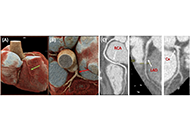 Enhancing patient care: a multimodality strategy for dilated cardiomyopathy in Chagas diseaseOpen AccessCase ReportChagas disease is a systemic illness characterized by acute and chronic phases. If untreated, it can lead to dysfunction of vital organs, notably the heart, ultimately resulting in heart failure. Tr [...] Read more.Luigy Vasquez-Yeng ... Nilda Espinola-ZavaletaPublished: September 22, 2024 Explor Cardiol. 2024;2:196–203
Enhancing patient care: a multimodality strategy for dilated cardiomyopathy in Chagas diseaseOpen AccessCase ReportChagas disease is a systemic illness characterized by acute and chronic phases. If untreated, it can lead to dysfunction of vital organs, notably the heart, ultimately resulting in heart failure. Tr [...] Read more.Luigy Vasquez-Yeng ... Nilda Espinola-ZavaletaPublished: September 22, 2024 Explor Cardiol. 2024;2:196–203
DOI: https://doi.org/10.37349/ec.2024.00033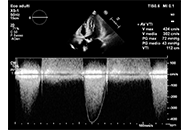 Valve-in-valve transcatheter aortic valve replacement: state of artOpen AccessReviewRedo surgical aortic valve replacement (SAVR) has long been the standard treatment for severe symptomatic aortic stenosis (AS) and insufficiency, but transcatheter aortic valve replacement (TAVR) ha [...] Read more.Marco Fabio Costantino ... Luisiana StolfiPublished: August 16, 2024 Explor Cardiol. 2024;2:183–195
Valve-in-valve transcatheter aortic valve replacement: state of artOpen AccessReviewRedo surgical aortic valve replacement (SAVR) has long been the standard treatment for severe symptomatic aortic stenosis (AS) and insufficiency, but transcatheter aortic valve replacement (TAVR) ha [...] Read more.Marco Fabio Costantino ... Luisiana StolfiPublished: August 16, 2024 Explor Cardiol. 2024;2:183–195
DOI: https://doi.org/10.37349/ec.2024.00032 -
